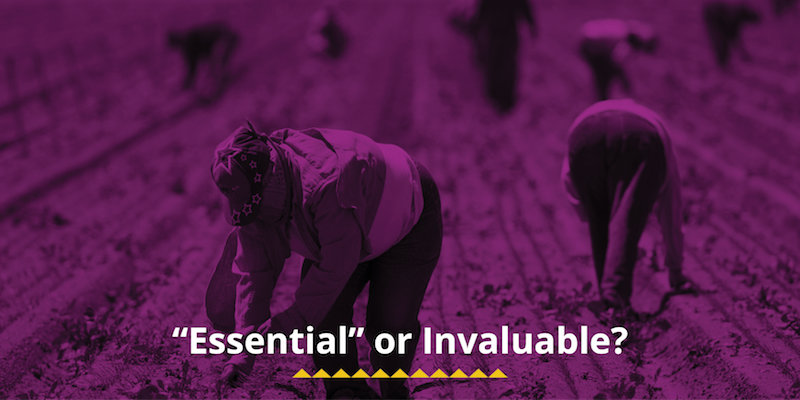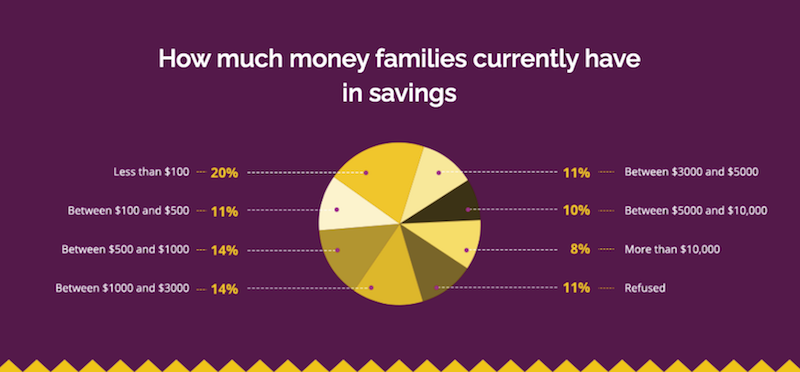
The Latino workforce is the key to COVID-19 recovery, but they aren’t receiving the aid they need
Ofelia Bucio first arrived in the U.S. as an orphan. She was a 14-year-old emigrating from Mexico, looking to reunite with her siblings and desperately seeking work.
“When I arrived in the U.S. I didn’t have anything, and opportunities were very limited,” Bucio says. She found work in the fields of Texas and plant nurseries of Florida. In 2014, Bucio was able to get DREAMer status. At age 30, after more than a decade of backbreaking work in the punishing heat, she earned her GED through the High School Equivalency Program for agricultural workers.
Now, happily married with a six-year-old son, the future she bootstrapped from the ground up is in danger.
As immigrants from Mexico, Ofelia and her husband Horsanel were ineligible for federal stimulus checks. Bucio considers their “essential worker” status both a blessing and a curse. She’s thankful for the income, but because both employers have reduced hours, the family is barely making enough for rent, food, and Horsenel’s prescriptions.
The Risk at Work
Horsanel works as an agricultural day laborer—he's “critical infrastructure” in the nation’s food supply, according to Homeland Security—but his hours have been cut drastically.
Horsanel has type 2 diabetes, and struggles to control his blood sugar at work. His condition makes him even more at risk for contracting coronavirus.
Latinos are four times more likely to be hospitalized than whites for COVID-19, according to the CDC. Social determinants of health such as systemic poverty, discrimination, and lack of healthcare mean that marginalized populations such as Latinos and Blacks are already more vulnerable to disease than whites—especially in a pandemic. Many Latino families, like the Bucio’s, don’t have the luxury of staying home from work to reduce coronavirus exposure. As harvest season advances, POLITICO reports, farms across the country are seeing spikes in coronavirus cases—including in Homestead, FL, where the Bucio’s live. This means Horsanel risks life and death for a paycheck each day in the fields.
“He is fortunate that his employers are taking safety precautions, but I hear stories from friends working for other agricultural companies that do not provide the masks or breaks they need to wash and disinfect their hands,” Bucio says.
Bucio, too, is an essential worker. Thanks to the DREAM Act, she was able to gain the education and certifications needed to become a childcare provider. While schools and pre-K centers remain closed, Bucio is using Zoom and FaceTime to connect with the young children and their parents. “I call them throughout the week to practice writing their names, numbers, and the alphabet,” she says.
Bucio is among the lucky few in childcare who remain employed. Latino workers and business owners make up a large share of the childcare industry, a sector that has been catastrophically destabilized by the COVID-19 pandemic. As childcare providers are forced to close, so-called “childcare deserts” are spreading across the nation.
Indeed, 46 percent of parents surveyed in the National Latino Parent Survey conducted by Latino Decisions and Abriendo Puertas said access to quality daycare or early childhood learning was the most important issue the government should address.


“Essential” and Invaluable
Latino families contribute more than $700 billion to the economy annually and own over four million U.S. businesses, according to the U.S. Hispanic Chamber of Commerce. As the second largest racial group behind whites, according to the Pew Research Center, they are hugely influential economically and politically. Working Latino families have been hailed as “the key to U.S. economic growth”.
It’s clear that the financial stability of Latino families will determine the overall economic stability of the nation. Because of this, it’s concerning that 33 percent of families reported they have seen their business either shut down or incur significant drops in revenue. Additionally, nearly half (45%) of Latino families across the country reported they have $1,000 or less in savings for financial emergencies, of whom 20 percent have $100 or less.
Researchers Edward Vargas, Adrián Pedroza, and Dr. Gabriel Sanchez write in an article for The Brookings Institute: “The fact that one in three Latino families have seen their businesses negatively impacted by COVID-19 is an inauspicious sign for the economic health of the small business sector.”
Aid for DREAMers and Beyond
Ofelia Bucio is emphatic. She says government aid was the biggest factor in her rise from orphaned day laborer to skilled worker and successful mother. And as a childcare provider, she’s fundamental to an industry that will determine parents’ ability to get back to work after COVID-19.
“The government should provide more help to support workforce and education development of adults, especially undocumented people,” Bucio says. Government support through the DREAM Act, she says, “was the only way I was able to grow professionally and educationally.”
Bucio is among 80 percent of Latino families who are asking for government help with rent and mortgage payments, and 61 percent who support government aid for education and career counseling. “Receiving help with wages and income” was the most cited issue (32%) in an open-ended question asking respondents about the most important issues facing their communities.
“I feel very proud that I was able to stick with it and earn my diploma,” Bucio says. “[In childcare] I have learned so much that helps me be a better mother and better understand my own child. It’s very different than working in agriculture. I now want to continue my studies and one day become a nurse.”
.
.


